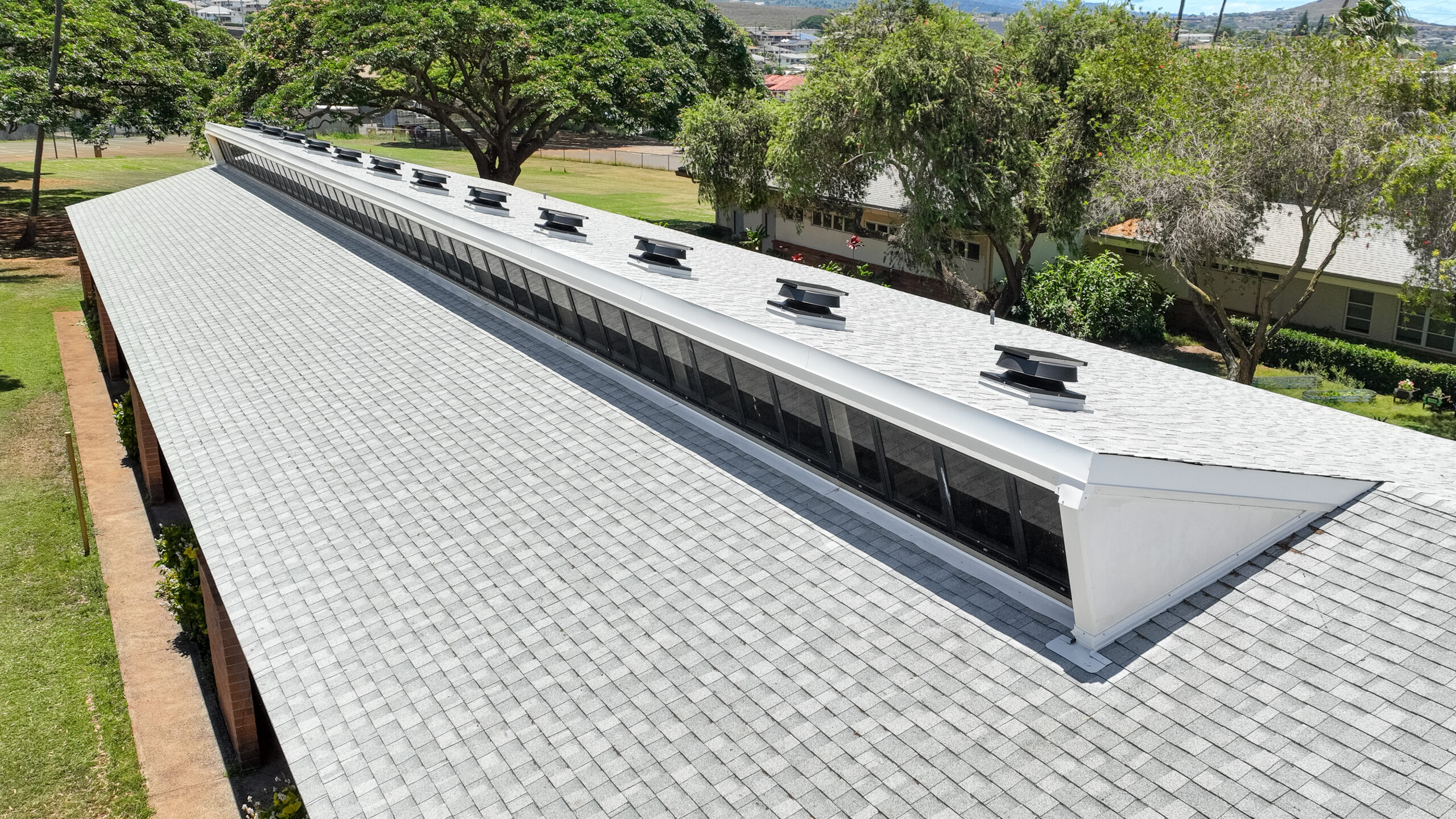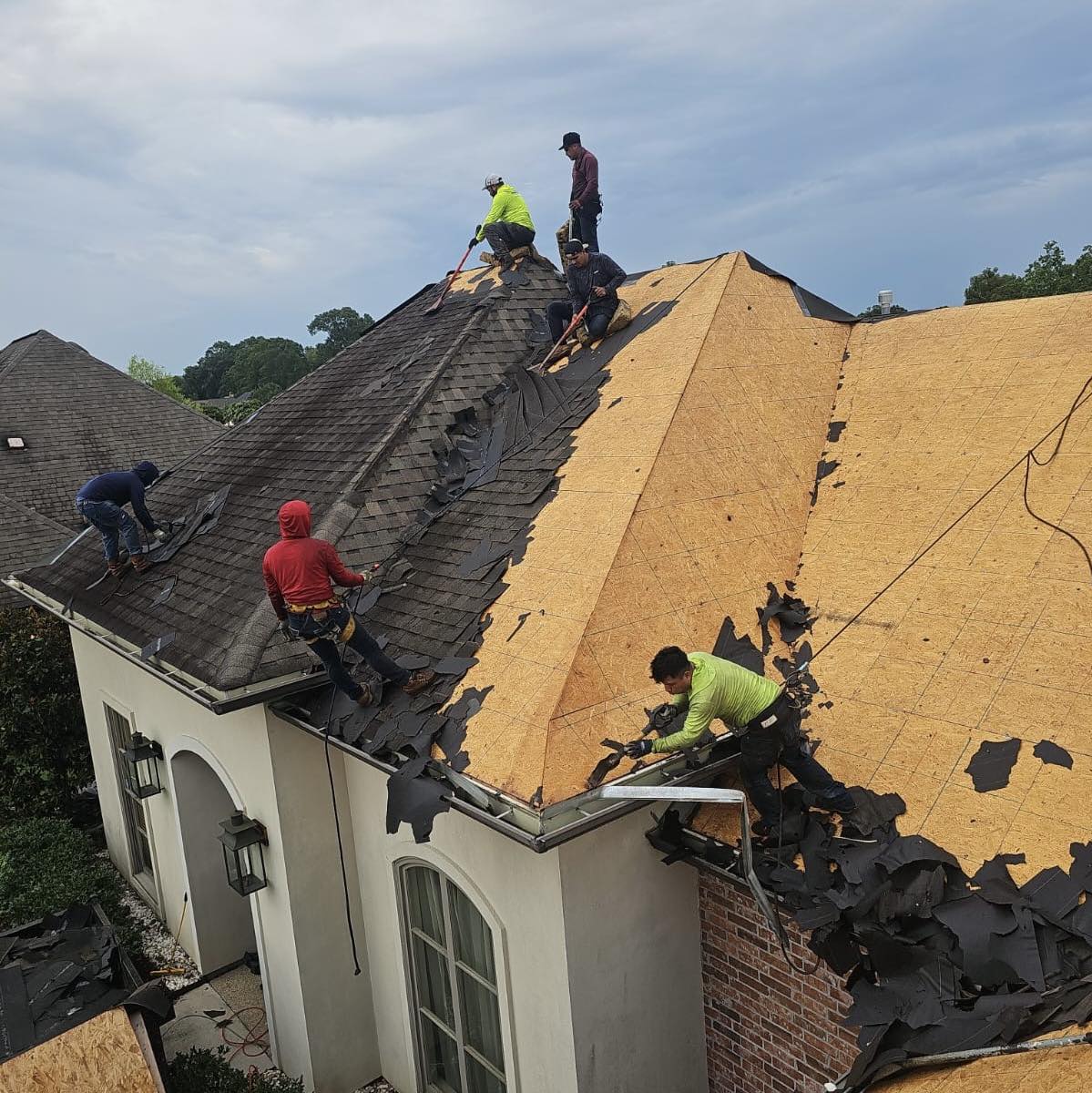Uncover Usual Roof Problems and How to Address Them Successfully
When it comes to your roof, spotting issues early can conserve you time and money. What specific actions should you take to guarantee your roof covering remains in top problem?
Identifying Roofing Leakages and Their Causes

Next, analyze your roofing system from the exterior. Look for missing or cracked floor tiles, rusted blinking, or damaged seamless gutters. Take note of areas around smokeshafts, vents, and skylights, as these prevail leakage resources. If you detect any of these concerns, it's important to resolve them immediately.
During hefty rain, observe your roof for any merging water or drips. This can reveal leakages that could not show up during completely dry conditions. By remaining attentive and regularly checking your roof, you can catch leakages early and shield your home from additional damages.
Handling Missing Out On or Damaged Tiles
When you notice missing or harmed shingles, it's necessary to act swiftly to stop further problems. You'll intend to determine the extent of the damages, fix any missing roof shingles, and take into consideration preventive upkeep tips to keep your roofing in leading shape. Taking these actions can conserve you money and time in the future.
Identifying Tile Damage
Although tiles are made to stand up to the components, they can still suffer damages over time, leading to prospective leaks and costly repair work. To determine shingle damages, begin by checking your roofing for missing, cracked, or crinkled shingles. Frequently monitoring your roof covering, particularly after severe weather, can help you capture issues early and keep the integrity of your home.
Repairing Missing Out On Roof Shingles
After spotting roof shingles damages, the next step is addressing any kind of missing out on or damaged shingles immediately to stop further issues. Begin by checking the affected location and establishing the number of roof shingles require substitute. If you can, climb onto your roof covering safely, using suitable gear. Eliminate any kind of damaged roof shingles very carefully utilizing a crowbar. Once you have actually removed the location, slide in the new roof shingles, ensuring they line up with the existing ones. Protect them with roof nails and apply roof adhesive for included security. Do not fail to remember to secure the sides to prevent water infiltration. If you're uncomfortable with the repair, it's smart to call a specialist. Taking activity promptly will aid preserve your roof covering's integrity and expand its life-span.
Preventive Maintenance Tips
Exactly how can you keep your roof covering in leading shape and protect against roof shingles from going missing out on or obtaining damaged? Examine your roofing system at least two times a year and after extreme weather condition (roofing contractors oahu).
Keep seamless gutters tidy and devoid of particles to ensure correct water flow and protect against roof shingles damages. Trim looming branches to reduce the risk of them scuffing versus your roof during tornados.
Think about using a protective sealant to prolong your roof shingles' life-span. Finally, if you notice any problems, address them quickly to stay clear of pricey repair work later. Taking these safety nets can conserve you time and money while guaranteeing your roofing system stays long lasting and reputable.
Recognizing Roof Covering Air Flow Issues
Proper roof covering air flow is crucial for maintaining the longevity and effectiveness of your roof covering system, as it aids manage temperature level and moisture levels in your attic. Without appropriate air flow, you may encounter issues like excessive heat buildup, leading to early tile deterioration, or increased humidity that can cause mold growth and wood rot.
To evaluate your roofing system ventilation, check for signs of overheating, such as distorted shingles or a warm attic room. Seek obstructed vents, which can limit air flow and catch warm. You must assure your intake and exhaust vents are balanced, permitting correct air exchange.
Dealing with these concerns immediately can safeguard your roof covering and conserve you from costly fixings down the line. Remain aggressive in keeping your roofing system's air flow to safeguard your home.
Addressing Roofing Moss and Algae Growth
While you might appreciate the natural look of moss and algae on your roofing, these organisms can lead to significant problems if left untreated. Use a soft-bristle brush to delicately scrub away the moss and algae, being cautious not to damage your tiles.
Next, think about applying a specialized roof covering cleaner or a mixture of water and bleach to kill staying spores. Rinse extensively to avoid any chemical damage. Furthermore, mount zinc or copper strips along the ridge of your roofing. As rainfall cleans over these steels, it creates a safety obstacle versus future development. Regular inspections and upkeep will certainly aid protect against moss and algae from returning, guaranteeing your roofing system continues to be healthy for several years ahead.
Fixing Tornado Damage and Wind Issues
After a storm, it's important to examine your roofing system for damage caused by high winds and hefty rainfall. Beginning by looking for missing out on or broken shingles, as these prevail casualties. If you observe any type of, it is necessary to replace them immediately to stop leakages. Next off, evaluate the blinking around smokeshafts and vents; damaged flashing can result in water infiltration.
Try to find any type of drooping locations, which might show water build-up or architectural problems. If you find any kind of debris, like branches or leaves, eliminate them meticulously to stay clear of additional damages. If your rain gutters are obstructed, check out here clear them to assure correct drainage.

For small repair services, you may handle it on your own, but do not wait to call a specialist for comprehensive damages. Bear in mind, acting rapidly can conserve you from bigger troubles down the line, so take that analysis seriously and address any type of issues as quickly as feasible.
Recognizing Signs of Structural Damages
Exactly how directory can you tell if your roof is enduring from structural damages? Next off, check for fractures or gaps in the wall surfaces or ceiling, as these can indicate changing or resolving due to roof covering problems. If you notice missing out on or damaged tiles, it's necessary to address them promptly, as they can subject your roofing to additional damage.
Regular Upkeep Tips for Durability

Regular Evaluations Value
Given that a roof covering is your home's very first line of protection against the components, normal assessments are vital for maintaining its stability. You need to examine your roof at the very least two times a year, ideally in springtime and loss, to catch prospective issues early. Keeping up with these examinations can stop costly repair work down the line and prolong your roofing's life expectancy, ensuring your home continues to be safe and audio for years to come.
Correct Rain Gutter Upkeep
Normal roofing system evaluations normally lead to the relevance of proper rain gutter upkeep. Check your gutters for leaks or rust; they can create water damage to your roof and home. By visit their website adhering to these ideas, you'll prolong your gutters' life-span and secure your roofing system.
Often Asked Questions
Exactly How Can I Choose the Right Roof Covering Material for My Home?
To select the ideal roofing product for your home, think about environment, durability, and aesthetic appeals. Research choices like asphalt shingles, metal, or tile. Think of upkeep requirements and spending plan to discover what suits you finest.
What Are the Signs I Need a Roof Replacement Rather Than Fixing?
If you observe widespread leaks, sagging, or missing tiles, you might require a roofing system substitute. If your roof's nearing its lifespan or has substantial damage, it's time to consider a complete substitute rather of just repair services.
Just how Frequently Should I Arrange Specialist Roof Assessments?
You need to schedule professional roofing system assessments a minimum of annually, ideally in spring or autumn. This aids catch potential issues early, ensuring your roofing system stays in good problem and prolonging its lifespan.
Can I Mount a New Roof Covering Over My Old One?
You can mount a new roof over your old one, but it's necessary to check local building regulations and guarantee the existing roof's problem is audio. This strategy can save money and time, yet take into consideration possible complications.
What Is the Average Lifespan of Various Roof Covering Products?
The standard life expectancy varies by material: asphalt shingles last 15-30 years, steel roof coverings can last 40-70 years, while floor tile or slate roof coverings might surpass 50 years. Choose carefully based on your environment and budget plan.
Final thought
By remaining attentive and dealing with usual roofing troubles quickly, you can protect your home and prolong your roof covering's life expectancy. With a little regular upkeep, you'll not only guard your investment yet likewise delight in peace of mind recognizing your roofing system is in leading form.
Comments on “The best roofing materials hawaii can withstand tropical weather year-round.”